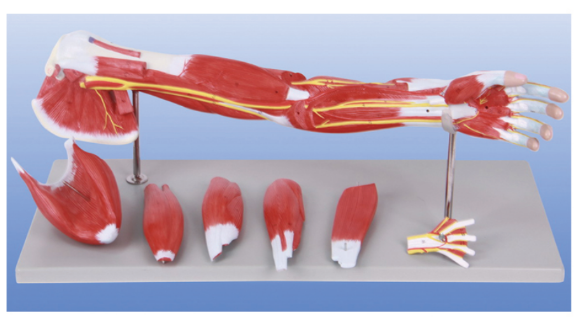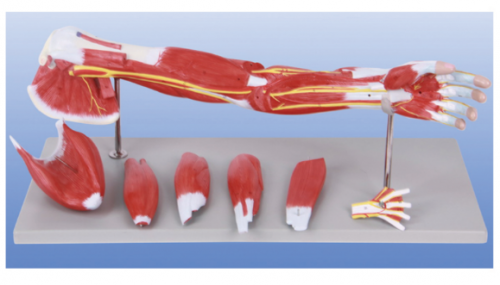In the complex system of the human body, the muscle group of the upper limb stands out for its fine structure and diverse functions. They are an important source of power to perform a variety of activities in daily life, whether it is grasping objects, writing words, or performing high-intensity physical exercise, can not be separated from the upper limb muscles to work together. In order to better understand the structure and function of these muscles, we can explore with the help of the anatomical model of the muscle of the upper limb.

The upper limb muscle anatomy model is a carefully designed tool that accurately simulates the muscle distribution and morphology of the human upper limb. Through this model, we can clearly see the position, shape and size of each muscle, as well as the connections between them. This intuitive display helps us better understand the structural characteristics of the upper limb muscles.
When exploring the muscles of the upper limb, the first thing we should focus on is the classification and hierarchy of muscles. The muscles of the upper limbs can be divided into surface muscles and deep muscles. Surface muscles are mainly responsible for generating strength and movement, such as the biceps, triceps and deltoids. Deep muscles, such as the pronator teres, supinator and ulnar flexor, are more involved in joint stability and posture. These muscles are precisely represented in the model, allowing us to intuitively understand their distribution and hierarchy.
In addition to classification and hierarchy, we should also focus on the function of the upper limb muscles. Different muscles play different roles in exercise. For example, the biceps are primarily responsible for elbow flexion and forearm pronation, while the triceps are responsible for elbow extension and shoulder stabilization. By manipulating the upper limb muscle anatomy model, we can simulate various upper limb movements, observe the contraction and relaxation of different muscles during movement, and thus gain a deeper understanding of their functional characteristics.
In addition, anatomical models of upper limb muscles can help us understand the mechanics of upper limb movement. During movement, muscles contract to generate force, which is transmitted through the bones and joints to the rest of the body. By manipulating the model, we can simulate different mechanical environments and observe how the muscles behave under different conditions, thus gaining a deeper understanding of the mechanics principles in upper limb movement.
In conclusion, the upper limb muscle anatomy model is an invaluable tool that helps us gain a deeper understanding of the structure and function of the upper limb muscles. By exploring this model, we can better understand the mechanics principle of upper limb movement, and provide strong support for sports training, rehabilitation treatment and medical education.

